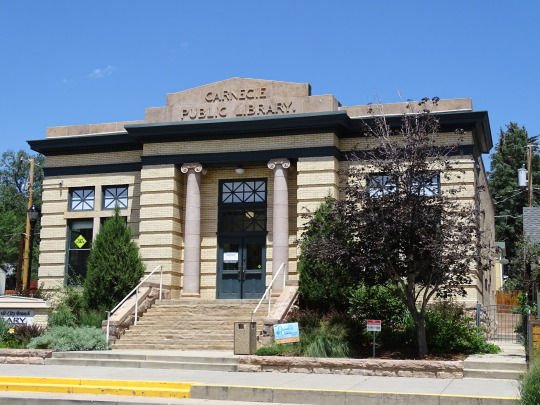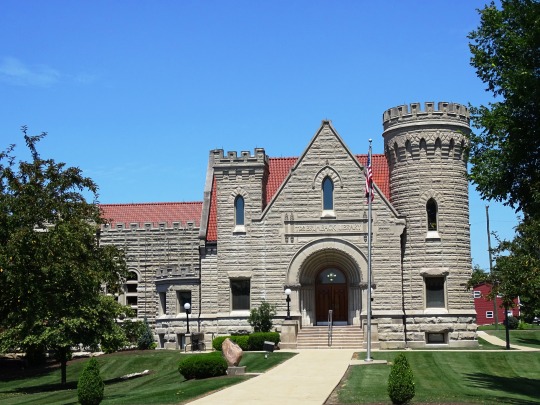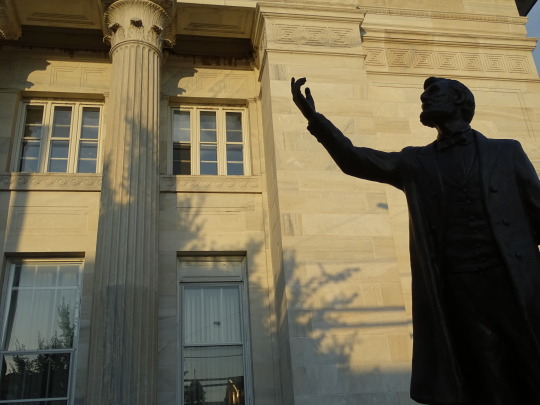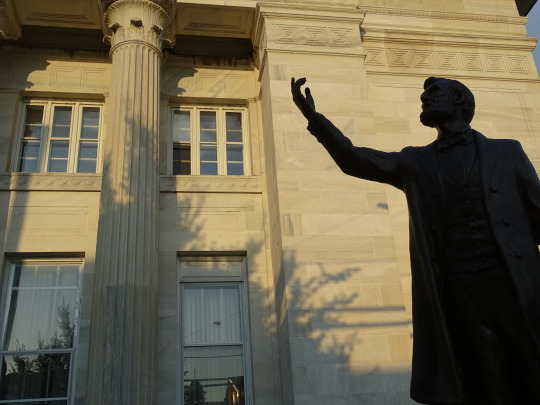#Brumback Library
Explore tagged Tumblr posts
Text

















Bibliomania Day
Bibliomania Day, celebrated on March 20 every year, commemorates the anniversary of the great grand heist of 23,600 books executed by Stephen Blumberg. Many people confuse bibliophilia — the love of books, with bibliomania, the compulsive disorder of hoarding books. This obsession with collecting books can even go on to damage a person’s social relations or health. Let’s learn more about bibliomania, its symptoms, facts, and how to know if you are a bibliomaniac.
HISTORY OF BIBLIOMANIA DAY
The story behind Bibliomania Day started in the 1950s, then later made popular by Stephen Blumberg, also known as the ‘Book Bandit,’ from Iowa who hoarded thousands of books. He amassed over 23,600 books from 327 libraries and museums across 45 states, two provinces in Canada, and the District of Columbia. The combined worth of the books was estimated to be $5,3 million. On March 20, 1990, Blumberg was caught when his friend turned him over to the F.B.I.
The term stems from two Greek words ‘biblio-’ meaning ‘book’ and ‘mania’ meaning madness.’ In essence ‘bibliomania’ translates to book madness. The term was initially used in 1734 by book collector Thomas Hearne. He wrote in his diary, “I should have been tempted to have laid out a pretty deal of money without thinking myself at all touched with bibliomania.” But, it was in 1809 when the term became widely known to people as Thomas Dibdin published a book titled “BIBLIOMANIA or Book of Madness.” He mentioned in his book that bibliomania is a medical condition called “the book disease.”
Symptoms of bibliomania include habits of acquiring large quantities of books, an excessive possessiveness over the collection, and also feeling distressed. There are no reasons why a person might become a bibliomaniac. In most cases, bibliomaniacs often become addicted to book collecting when they are very young. They do this as a way of coping with a difficult hardship. So, keep a check on your love for books!
BIBLIOMANIA DAY TIMELINE
1734
The First Use of the Word
Thomas Hearne uses the word ‘bibliomania’ in his diary
1750
A Letter to a Son
Lord Chesterfield writes a letter to his son where he mentions “Beware of the bibliomanie.”
1809
Book Madness is Published
Reverend Thomas Dibdin publishes a book titled “BIBLIOMANIA or Book madness.”
1990
The Book Bandit is Caught
Stephen Blumberg is caught and handed over to the F.B.I. for stealing books.
BIBLIOMANIA DAY FAQS
What are the other words for Bibliomania?
The love for books can be expressed in many terms including bibliomaniac, bibliophile, bookworm, book-lover, and book reviewer.
Who popularized the term Bibliomania?
John Ferriar, a physician at the Manchester Royal Infirmary, coined the term bibliomania. He dedicated it to his bibliomaniac friend.
Can you become obsessed with a book?
Yes, it is possible to become obsessed with books or even a particular book. However, most of the time, the book obsession will be under control.
BIBLIOMANIA DAY ACTIVITIES
Buy books: The best way to celebrate Bibliomania Day is by buying or getting as many books as possible. It would be much better if you were to buy them and probably not heist them!
Read books on bibliomania: Celebrate this day by reading books that give insight into bibliomania. Examples are books such as “A Gentle Madness: Bibliophiles, Bibliomanes, and the Eternal Passion for Books.”
Gift a book to someone: What’s better than buying books or reading them on Bibliomania Day to celebrate it? Yes, you guessed it! Gifting them! You can give books to your friends, family, or colleagues.
5 INTERESTING FACTS ABOUT BIBLIOMANIA
Not a recognized disorder: The American Psychiatric Association refused to recognize bibliomania as a disorder.
It has a Japanese name too: In Japanese, bibliomania is called ‘tsundoku,’ and is good behavior.
They can be seduced by books: Bibliomaniacs can be aroused by the presence of books.
The vello-mania: There is also a condition called vello-mania whereby the person accumulates documents.
It may indicate abuse: Some experts suggest bibliomania may develop due to trauma or repeated abuse.
WHY WE LOVE BIBLIOMANIA DAY
Books are awesome: Books are not just some papers to read. They have been proven to promote brain growth, spark creativity and change us to be smart people. Well, what more can we ask for?
It fosters healthy relationships: Reading books and sharing the love for books on Bibliomania Day with your friends, family, or strangers fosters a healthy relationship. Books can get people to bond.
It teaches us life: Books are a gateway to another world where everything is possible and doable. Whatever book you may read, it can teach you something new.
Source
#Library and Archives Canada#Ottawa#Sonoma#Alcatraz Federal Penitentiary#Salt Lake City#Brumback Library#Van Wert#Rose Main Reading Room#Midtown Manhattan#New York City#Stephen A. Schwarzman Building#Library of Parliament#USA#Old Colorado City Branch Carnegie Library#Colorado Springs#Boston Public Library#McKim Building#Adams County Public Library#Gettysburg#Harold Washington Library Center#Chicago#Canada#Vancouver Public Library#Bibliomania Day#20 March#BibliomaniaDay#architecture#cityscape#original photography
5 notes
·
View notes
Link
0 notes
Photo





The Brumback Library
215 W. Main St.
Van Wert, OH 45891
The Brumback Library stands as the first county library formed in the United States. Built with funds bequeathed to Van Wert County residents by John S. Brumback, an early entrepreneur, the building was dedicated in 1901. The architecture is a combination of Gothic and Romanesque. With its turreted towers and Ludowici roof, the library presents a most grand appearance amid the trees of the park where it is located. In 1979, the Brumback Library was listed on the National Register of Historic Places, qualifying both because of its architecture and because of its place in the area's history. The library has been selected by Library Journal as the number one library in the state of Ohio and number eight in the United States for libraries with similar budgets and funding levels. The Brumback Library has five branches located in Convoy, Middle Point, Ohio City, Willshire, and Wren, and clearly serves as an outstanding example of great foresight and philanthropy, a true cultural legacy.
2 notes
·
View notes
Photo

The Brumback Library in Van West, OH has the distinction if being the first public library in the U.S.A. #library #history #architecture #ohio #smalltown #travel #architecturelovers #historic #brumbacklibrary #davideoandphotography (at The Brumback Library)
#davideoandphotography#historic#travel#architecturelovers#library#smalltown#brumbacklibrary#architecture#ohio#history
1 note
·
View note
Text
Severe Storms Spawn Tornadoes, Damage Homes in Southeast
Visit Now - http://zeroviral.com/severe-storms-spawn-tornadoes-damage-homes-in-southeast/
Severe Storms Spawn Tornadoes, Damage Homes in Southeast
Severe storms that spawned tornadoes damaged homes and downed trees as they moved across the Southeast on Monday night.
Forecasters warned that the storms could threaten more than 29 million people, raising the risk of powerful tornadoes, damaging winds and hail the size of tennis balls.
Cities in northern Alabama reported power outages, and the National Weather Service in Huntsville reported at least three confirmed tornadoes in the area.
In Limestone County, an Alabama county on the Tennessee border, the sheriff’s office posted photos online of houses with roofs ripped off and outbuildings torn from their foundations. Several roads were closed because of power lines or trees, the office tweeted. But it had no reports of injuries from the storms.
The athletic director at Jacksonville State University said late Monday there was significant damage to the campus.
“I can confirm we have major roof damage at Pete Mathews Coliseum, but The Pete is not completely destroyed,” Greg Seitz said in a tweet.
Portions of northern Alabama and southern Tennessee were still under tornado warnings Monday night, and the National Weather Service issued a tornado watch for much of northern Georgia as the line moved eastward.
Forecasters said the storm threat is unusually dangerous because of the possibility of several tornadoes, some of which could be intense. The weather service says hail as large as 3 inches (7.5 centimeters) in diameter could fall, and there’s a possibility of wind gusts to 70 mph (115 kph).
“The potential for strong to violent, long-track tornadoes is a real possibility,” Alabama state meteorologist Jim Stefkovic said at a news conference.
Alabama Emergency Management Executive Operations Officer Jeff Smitherman raised the threat level and increased staffing at Alabama’s emergency management agency. The storms are the first severe weather to threaten the state this year.
School systems from central Tennessee as far south as Birmingham, Alabama, let out early, hoping students and staff would have time to get home before the storms moved through.
The threatened storms came one day before the official start of spring, and are “by far the most impressive setup we’ve seen so far this year,” said Kurt Weber, a meteorologist at the National Weather Service in Huntsville, Alabama.
“We can’t rule out a strong tornado east of Interstate 65 at this point with all the ingredients coming together,” Weber added. “Hopefully not, but definitely a possibility.”
He said golf ball to tennis ball-sized hail, which can do serious damage to buildings and cars, was possible.
“This is one of those days you want to put the car in the garage if you can,” Weber said.
Alabama Gov. Kay Ivey urged Alabamians to implement safety plans and get in a safe location.
“We are not taking the situation lightly,” Ivey said. “Severe weather is unpredictable and that is why it is paramount we prepare ahead of time.”
The University of Alabama suspended operations Monday from 6:30 p.m. to midnight, meaning classes and campus activities were cancelled, libraries closed and shelters were opened on campus.
___
Associated Press writer Jay Reeves in Birmingham, Alabama, Mallory Moench in Montgomery, Alabama, and Kate Brumback in Atlanta contributed to this report.
Copyright 2018 Associated Press. All rights reserved. This material may not be published, broadcast, rewritten or redistributed.
Want to stay up to date?
Get the latest insurance news sent straight to your inbox.
0 notes
Text
How to Talk So Your Legislators Will Listen
Thursday, October 12, 2pm at the Library. Join us for this useful and informative program that will cover the most effective ways to reach your state legislators and make your voice heard. We’ll discuss at what points in the legislation process communication from constituents are most effective and why it is important to contact legislators when you know they agree with you.
Nancy Brumback is a…
View On WordPress
0 notes
Text
6-23-17
Today we went to the Brumback Library to exchange some of Addie's book... she is in the summer reading program this year. We love reading books together! :)
0 notes
Photo










Bibliomania Day
Stephen Blumberg loved books. It has been written that “it was his habit to read constantly through the night, cat-napping, walking, reading, dozing, waking, reading again, never fully sleeping.” Stephen Blumberg didn’t just love books, he was a bibliomaniac. Bibliomania is when someone has a strong love of books, where they collect them to the point of hoarding, and social relations and health may suffer. Symptoms may include acquiring more books than would be useful for any reason or getting many copies of the same book. The term was coined by John Ferriar, who published a poem in 1809 with the word as its title, for his friend Richard Heber, who had the condition. The term became used to describe obsessive book collectors. That same year, Reverend Thomas Frognall Dibdin published Bibliomania; or Book Madness. Bibliomania is different from bibliophilia, which is a healthy form of love for books.
On March 20, 1990, Stephen Blumberg’s bibliomania caught up with him. He was arrested for stealing more than 23,600 books (weighing 19 tons) from 268 libraries, universities, and museums. It had taken him over 20 years to steal them, and he got them from 45 states, Washington D.C., and Canada. After originally being thought to be valued at around $20 million, the value of the books was estimated at $5.3 million. He is known as the number one book thief in American history and became known as the Book Bandit. The books he stole, which included a first edition of Uncle Tom’s Cabin among other rare books, became known as the “Blumberg Collection.”
An acquaintance of Blumberg, Kenneth J. Rhodes, turned him in for a $56,000 reward. During Blumberg’s trial, a psychiatric doctor let it be known that Blumberg had gone through psychiatric treatment as an adolescent. The defense claimed that Blumberg had stolen the books because of psychiatric issues beyond his control. According to the defense, Blumberg had thought he was saving the books from destruction by stealing them. He thought that the government was trying to keep them so that everyday people wouldn’t have them, and he thought he was acting as custodian of the books and doing something good. Because he was well-intentioned, he said he would have never sold any of the books for a profit, and hoped they would go to another person who would take good care of them after he was gone. Nonetheless, he was sentenced to 71 months in prison and given a $200,000 fine, and insanity or psychology wasn’t factored into the decision. He was released on December 29, 1995, and has since been arrested for burglary multiple times.
On Bibliomania Day, we remember Stephen Blumberg and his remarkable feat of stealing over 23,600 books. Could you buy, steal, or gather together that many books? Probably not, but you aren’t the world’s most famous bibliomaniac. Perhaps on Bibliomania Day, you could at least try.
How to Observe
Celebrate the day by getting as many books as possible. It’s probably best not to steal them as Stephen Blumberg did, but that’s a decision you will have to make for yourself. You could start by getting some books about bibliomaniacs, such as A Gentle Madness: Bibliophiles, Bibliomanes, and the Eternal Passion for Books or The Man Who Loved Books Too Much: The True Story of a Thief, a Detective, and a World of Literary Obsession. After that your options are limitless. As bibliomaniacs tend to collect any and all books, regardless of their value, you could just start trying to gather up any books you can find. But maybe it’s best to start by getting some of the best fiction or non-fiction books of all time.
Source
#Brumback Library#Van Wert#Rose Main Reading Room#Midtown Manhattan#New York City#Stephen A. Schwarzman Building#Library of Parliament#USA#Ottawa#Old Colorado City Branch Carnegie Library#Colorado Springs#Boston Public Library#McKim Building#Adams County Public Library#Gettysburg#Harold Washington Library Center#Chicago#Canada#Vancouver Public Library#Bibliomania Day#20 March#BibliomaniaDay#architecture#cityscape#original photography
4 notes
·
View notes
Photo










Van Wert, OH
The Van Wert County Courthouse is a historic governmental building in downtown Van Wert, Ohio, United States. Located at 121 E. Main Street, the courthouse is a Second Empire structure built in 1876. It is Van Wert County's third courthouse: when the county was established, the village of Willshire was designated the county seat; Van Wert was made the seat in 1838, and a courthouse-and-jail complex was built in that community in the following year.
Designed by T.J. Tolan, an architect from Fort Wayne, Indiana, the courthouse is a square structure with towers on all four corners. Its architecture combines copious amounts of brick and stone: the foundation and the walls of the first floor are stone, along with the pilasters, columns, and quoins on the upper parts of the exterior, while the walls of the remaining stories and of the tower are built of brick.[4] Tolan employed multiple groundbreaking construction techniques throughout the structure, such as pressed steel; his success in using these innovations earned recognition for both him and the courthouse in a national trade journal.[5] Rising above the front of the courthouse is a clock tower with a statue of Justice placed in a niche. Made of zinc, the statue is 8 feet (2.4 m) tall; before its installation at the courthouse, it was awarded first place in a Philadelphia sculpture competition.
Today, county officials continue to use the courthouse for everyday operations. Among the offices in the courthouse are those of the county treasurer, the county recorder, the county auditor, and the Van Wert County Common Pleas Court. Some other county agencies maintain offices in other locations, such as the county sheriff and the county commissioners.
In 1974, the Van Wert County Courthouse was listed on the National Register of Historic Places, becoming the first building in the county to receive this distinction. It qualified for inclusion because of its well-preserved historic architecture, which was seen as significant statewide.
Source: Wikipedia
#Brumback Library#Van Wert County Courthouse#Van Wert#justice#Ohio#Midwestern USA#T.J. Tolan#Main Street#Lincoln Highway#summer 2019#USA#original photography#travel#vacation#cityscape#small town#architecture#façade#B & K Root Beer Drive In#street scene#East North Central region#downtown#landmark#roadside attraction#tourist attraction
9 notes
·
View notes
Photo










National Read a Book Day
For some people, reading is their ultimate form of relaxation and fun! For others, reading can seem like a bit of a chore. No matter what category you fall into, we encourage you to embrace National Read a Book Day. Usually, it is simply about finding the right book for you. From memoirs to sci-fi; there are so many different types of books out there today, so use National Read a Book Day to find the perfect book for you to really get stuck into. Read on to discover everything that you need to know about National Read a Book Day and the different ways that you can celebrate this date.
Learn about National Read a Book Day
National Read a Book Day is the perfect day to get lost in a good book. You are encouraged to get your head down and get lost in a story, whether fact or fictional. It is also a great day for encouraging others to read books and raising awareness about them. After all, there are many different benefits that are associated with reading. This includes the fact that it can lower stress, as well as improving concentration and memory. Studies have shown that adults who spend time reading tend to take part in activities over their lifetime that are more mentally stimulating when compared with those who don’t, as well as showing a slower cognitive decline. Plus, books are an inexpensive way of learning more about the world and having fun.
There are so many reasons why we recommend reading a book, not only on National Read a Book Day, but whenever you find time out of your bust schedule to do so. Reading a book gives you the chance to sit in your favorite chair and enjoy some peace and quiet after all. Plus, if you are one of those people that love quotes, you are going to find plenty of good ones when reading a book.
You know you’ve read a good book when you turn the last page and feel a little as if you have lost a friend.
Other reasons why we recommend reading books is because most movies out there are based on novels, which often tend to be better than the films. After all, there is only so much that you can cram into a couple of hours on screen, whereas a book is going to enable you to delve deeper into the journey. Plus, books aren’t only about reading great tales. There are a lot of books out there that can change your perspective on life and help you to live life to the fullest. You will be surprised by how much a book like this can change your outlook and bring a lot of good to your existence.
History of National Read a Book Day
The first celebration of National Read a Book Day was around the end of the first decade of the 2000s and was almost certainly the idea of a librarian, probably one who was encouraging youngsters to read a book.
Of course, there are a lot of significant dates in history relating to books. In 1455, people around the World were given the chance to read thanks to the Gutenberg Bible. This was the first book that was mass-printed. It was produced in Mainz, Germany. As the name indicates, it is a Bible. It was produced by Johann Gutenberg and it is written in Latin.
The first book that was printed in English was the “The Recuyell of the Historyes of Troye.” This was printed by William Caxton in 1473. The text is a translation of the French stories about Troy. We’d have to wait several hundred years for the first book to be written on a typewriter. This was Mark Twain’s “Tom Sawyer.”
National Read a Book Day Timeline
4000 BC Writing begins in Mesopotamia
With some rudimentary squiggles and lines that represent pictures of animals, marks are made on clay that are the first parts of writing.
Akkadian Princess and High Priestess Enheduanna writes hymns and signs her name on the clay tablets. These and other early texts are meant to be read out loud.
7th Century BC First organized library is established
In the Ancient Middle East, an Assyrian ruler in Nineveh creates a collection of more than 30,000 cruciform tablets.
1450 Gutenberg invents the printing press
An invention that changed everything for education is developed as a working prototype in Germany by Gutenberg. It is ready for commercial use in just a few more years.
1800s-1900s Literacy rates rise
As the Industrial Revolution brings an increase of accessibility to books, the ability to read also increases for the common person.
How to celebrate National Read a Book Day
Reading is a form of prayer, a guided meditation that briefly makes us believe we’re someone else, disrupting the delusion that we’re permanent and at the center of the universe. Suddenly (we’re saved!) other people are real again, and we’re fond of them.
On National Read a Book Day, it’s not compulsory to read a whole book but the day serves as inspiration to people to read a section of a book they particularly enjoyed, to read with children, to donate a book to a children’s school library, or to host a book reading party.
Although the day was probably thought of with print books in mind, e-books are equally suitable for celebrating National Read a Book Day. The main goal is to encourage reading, as both fiction and non-fiction books open up huge unknown vistas to enquiring minds.
Taking the opportunity to enjoy some time out of the day to relax and read is good for the soul and the mind.
Not only is National Read a Book Day a good day for you to, well, read a book, but it is also a good day to encourage other people to do the same. You can spread the word online about the benefits that are associated with reading. You can share your favorite books, as they may encourage other people to give them a read.
We would also recommend joining a book club. You can join a book club in your local area or you could join an online book club if you don’t want to go to meetings face-to-face. Book clubs are a lot of fun because they encourage you to read more and you can share your thoughts on a good book with others. If you are already a member of a book club, why not use National Read a Book Day to organize a book party for them? You can invite all of the members of the book club and discuss a book. You can all bring a dish that is inspired by the book. This is a great way to have fun and celebrate your love of books together.
Another way to celebrate National Read a Book Day is by organizing your books. Do you have a whole host of books scattered around your home? Maybe you have a book full of books that is simply gathering dust? If so, now would be the perfect opportunity for you to organize your books. You can decide on which books you’re going to keep and which books you won’t read again. For the ones that you won’t read again, you have several different options here. You could take them to a second-hand book store, you could sell them online, or you could donate them to a charity. It’s up to you! You will feel much better for it. After all, clutter can cause chaos in the mind, and this can make it impossible for you to relax and fully embrace a good book.
So there you have it: some of the different ways that you can celebrate National Read a Book Day. Of course, the best way to celebrate this day is by grabbing a good book and getting lost in it.
National Read a Book Day FAQs
When is National Read a Book Day?
National Read a Book Day comes every year on September 6 when people set aside other activities and enjoy the beauty of reading a good, old-fashioned book.
How to Read a Book online?
The internet offers a variety of sources to read online books for free, especially older books that have aged out of their copyright. Project Gutenberg, Open Book, Open Library and The Library of Congress all have free items on offer.
What is National Read a Book Day?
National Read a Book Day is just what it sounds like–it’s a day that encourages people to read a book! Set aside some time to sit in a room and quietly read a book–whether reading for yourself or to a child.
How to celebrate National Read a Book Day?
Whether going to a library, starting a book club, donating a book or buying one, this is the day to enjoy everything that has to do with reading and sharing a book.
How was the first book printed?
The first books were originally written by hand, then block printing was used in China in the Tang Dynasty, followed by the printing press that came into commercial use in 1450.
Source
#Norman Bethune by David Pellettier#Toronto#Sweden#Canada#travel#USA#Rose Main Reading Room#Stephen A. Schwarzman Building#vacation#Brumback Library#Van Wert#New York City#Manhattan#President Abraham Lincoln by Stanley J. Watts#Gettysburg#National Read a Book Day#ReadABookDay#6 September#architecture#cityscape#tourist attraction#landmark
0 notes
Photo










Bibliomania Day
Stephen Blumberg loved books. It has been written that “it was his habit to read constantly through the night, cat-napping, walking, reading, dozing, waking, reading again, never fully sleeping.” Stephen Blumberg didn’t just love books, he was a bibliomaniac. Bibliomania is when someone has a strong love of books, where they collect them to the point of hoarding, and social relations and health may suffer. Symptoms may include acquiring more books than would be useful for any reason or getting many copies of the same book. The term was coined by John Ferriar, who published a poem in 1809 with the word as its title, for his friend Richard Heber, who had the condition. The term became used to describe obsessive book collectors. That same year, Reverend Thomas Frognall Dibdin published Bibliomania; or Book Madness. Bibliomania is different from bibliophilia, which is a healthy form of love for books.
On March 20, 1990, Stephen Blumberg’s bibliomania caught up with him. He was arrested for stealing more than 23,600 books (weighing 19 tons) from 268 libraries, universities, and museums. It had taken him over 20 years to steal them, and he got them from 45 states, Washington D.C., and Canada. After originally being thought to be valued at around $20 million, the value of the books was estimated at $5.3 million. He is known as the number one book thief in American history and became known as the Book Bandit. The books he stole, which included a first edition of Uncle Tom’s Cabin among other rare books, became known as the “Blumberg Collection.”
An acquaintance of Blumberg, Kenneth J. Rhodes, turned him in for a $56,000 reward. During Blumberg’s trial, a psychiatric doctor let it be known that Blumberg had gone through psychiatric treatment as an adolescent. The defense claimed that Blumberg had stolen the books because of psychiatric issues beyond his control. According to the defense, Blumberg had thought he was saving the books from destruction by stealing them. He thought that the government was trying to keep them so that everyday people wouldn’t have them, and he thought he was acting as custodian of the books and doing something good. Because he was well-intentioned, he said he would have never sold any of the books for a profit, and hoped they would go to another person who would take good care of them after he was gone. Nonetheless, he was sentenced to 71 months in prison and given a $200,000 fine, and insanity or psychology wasn’t factored into the decision. He was released on December 29, 1995, and has since been arrested for burglary multiple times.
On Bibliomania Day, we remember Stephen Blumberg and his remarkable feat of stealing over 23,600 books. Could you buy, steal, or gather together that many books? Probably not, but you aren’t the world’s most famous bibliomaniac. Perhaps on Bibliomania Day, you could at least try.
How to Observe
Celebrate the day by getting as many books as possible. It’s probably best not to steal them as Stephen Blumberg did, but that’s a decision you will have to make for yourself. You could start by getting some books about bibliomaniacs, such as A Gentle Madness: Bibliophiles, Bibliomanes, and the Eternal Passion for Books or The Man Who Loved Books Too Much: The True Story of a Thief, a Detective, and a World of Literary Obsession. After that your options are limitless. As bibliomaniacs tend to collect any and all books, regardless of their value, you could just start trying to gather up any books you can find. But maybe it’s best to start by getting some of the best fiction or non-fiction books of all time.
Source
#Stephen A. Schwarzman Building#Norman Bethune by David Pellettier#Toronto#original photography#Manhattan#New York City#architecture#Vancouver#New York Public Library Main Branch#Vancouver Public Library#Rose Main Reading Room#Bibliomania Day#BibliomaniaDay#20 March#cityscape#Chicago#Brumback Library#Van Wert#Adams County Public Library#Gettysburg#Boston#Ottawa#Library of Parliament#Canada#Harold Washington Library Center#USA#tourist attraction
0 notes
Photo










Bibliomania Day
Stephen Blumberg loved books. It has been written that “it was his habit to read constantly through the night, cat-napping, walking, reading, dozing, waking, reading again, never fully sleeping.” Stephen Blumberg didn’t just love books, he was a bibliomaniac. Bibliomania is when someone has a strong love of books, where they collect them to the point of hoarding, and social relations and health may suffer. Symptoms may include acquiring more books than would be useful for any reason or getting many copies of the same book. The term was coined by John Ferriar, who published a poem in 1809 with the word as its title, for his friend Richard Heber, who had the condition. The term became used to describe obsessive book collectors. That same year, Reverend Thomas Frognall Dibdin published Bibliomania; or Book Madness. Bibliomania is different from bibliophilia, which is a healthy form of love for books.
On March 20, 1990, Stephen Blumberg’s bibliomania caught up with him. He was arrested for stealing more than 23,600 books (weighing 19 tons) from 268 libraries, universities, and museums. It had taken him over 20 years to steal them, and he got them from 45 states, Washington D.C., and Canada. After originally being thought to be valued at around $20 million, the value of the books was estimated at $5.3 million. He is known as the number one book thief in American history and became known as the Book Bandit. The books he stole, which included a first edition of Uncle Tom’s Cabin among other rare books, became known as the “Blumberg Collection.”
An acquaintance of Blumberg, Kenneth J. Rhodes, turned him in for a $56,000 reward. During Blumberg’s trial, a psychiatric doctor let it be known that Blumberg had gone through psychiatric treatment as an adolescent. The defense claimed that Blumberg had stolen the books because of psychiatric issues beyond his control. According to the defense, Blumberg had thought he was saving the books from destruction by stealing them. He thought that the government was trying to keep them so that everyday people wouldn’t have them, and he thought he was acting as custodian of the books and doing something good. Because he was well-intentioned, he said he would have never sold any of the books for a profit, and hoped they would go to another person who would take good care of them after he was gone. Nonetheless, he was sentenced to 71 months in prison and given a $200,000 fine, and insanity or psychology wasn’t factored into the decision. He was released on December 29, 1995, and has since been arrested for burglary multiple times.
On Bibliomania Day, we remember Stephen Blumberg and his remarkable feat of stealing over 23,600 books. Could you buy, steal, or gather together that many books? Probably not, but you aren’t the world’s most famous bibliomaniac. Perhaps on Bibliomania Day, you could at least try.
How to Observe
Celebrate the day by getting as many books as possible. It’s probably best not to steal them as Stephen Blumberg did, but that’s a decision you will have to make for yourself. You could start by getting some books about bibliomaniacs, such as A Gentle Madness: Bibliophiles, Bibliomanes, and the Eternal Passion for Books or The Man Who Loved Books Too Much: The True Story of a Thief, a Detective, and a World of Literary Obsession. After that your options are limitless. As bibliomaniacs tend to collect any and all books, regardless of their value, you could just start trying to gather up any books you can find. But maybe it’s best to start by getting some of the best fiction or non-fiction books of all time.
Source
#Rose Main Reading Room#New York Public Library Main Branch#Manhattan#Stephen A. Schwarzman Building#New York City#Bibliomania Day#20 March#BibliomaniaDay#architecture#cityscape#original photography#travel#vacation#Harold Washington Library Center#Chicago#Brumback Library#Van Wert#Gettysburg#President Abraham Lincoln by Stanley J. Watts#Adams County Public Library#Norman Bethune by David Pellettier#Toronto#Canada#Library of Parliament#Ottawa#Boston Public Library McKim Building#Vancouver Public Library
0 notes
Photo










B&K Root Beer Drive In, Van Wert (No. 2)
Van Wert is a city in and the county seat of Van Wert County, Ohio, United States. The municipality is located in northwestern Ohio approximately 77 mi (123 km) SW of Toledo and 34 mi (54 km) SE of Fort Wayne, Indiana. The population was 10,846 at the 2010 census. It is the principal city of and is included in the Van Wert Micropolitan Statistical Area, which is included in the Lima-Van Wert-Wapakoneta, Ohio Combined Statistical Area. Van Wert is named for Isaac Van Wart, one of the captors of Major John André in the American Revolutionary War. A center of peony cultivation, Van Wert has hosted the annual Van Wert Peony Festival on and off since 1902. Van Wert is home to the first county library in the United States, the Brumback Library. It also has a thriving community art center the Wassenburg Art Center and the award-winning Van Wert Civic Theatre. The home office of Central Insurance Companies is located in Van Wert.
Van Wert was surveyed in 1824 by Captain James Riley, who was contracted by the government to survey lands purchased from Native Americans under a treaty in 1818. It was incorporated as a town in 1848 and was chartered as a city in 1903.
The town is located in an area originally known as the Black Swamp. Early pioneers had to deal with swampy ground, mud, and malaria. They persevered, draining the swamp for agriculture and eventually reclaiming enough dry land to establish the town. Van Wert was the birthplace of aviation pioneer Walter Hinton and the famous baritone Charles W. Clark.
At one point, Van Wert was the only place in the world producing Liederkranz cheese. This pungent dairy product was made at the now-closed Borden plant.
The people of Van Wert (400 of which called themselves "Cheesemakers") contributed to the town of Vimoutiers, Orne, Lower Normandy, France with help in the costs of reconstruction and reparation of the town after it was mistakenly bombed by the US Air Force during World War II. They volunteered to pay for the replacement of Marie Harel's statue in 1953. This is recorded by a plaque in the market square of Vimoutiers. Vimoutiers is a centre for local making of Camembert, Livarot and Pont-l'Évêque cheeses.
On November 10, 2002, an F4 tornado ripped through the town, killing two people. This was one of many tornado touchdowns during the 2002 Veterans Day Weekend tornado outbreak. Van Wert's emergency warning system is credited with saving many lives after several cars were thrown into a movie theatre that had been packed with people just minutes earlier.
Source: Wikipedia
#B&K Root Beer Drive In#B & K Root Beer Drive In#Van Wert#Ohio#sign#street food#fries#corn dog#rental car#eating#summer 2019#USA#Midwestern USA#East North Central region#travel#vacation#landmark#Main Street#Lincoln Highway#roadside attraction#tourist attraction#road trip
3 notes
·
View notes
Photo




Fountain Park W. Main and S. Jefferson Sts. Van Wert, OH 45891 The 2.0 acre beautiful Fountain Park is located at the corner of West Main Street and South Jefferson Street, right down town across from the Historic Brumback Library in downtown Van Wert, OH. It is a great place to nestle down on a park bench to read and enjoy a book. The Gazebo that is found in the center of the park is meticulously adorned with beautiful hanging flower pots. All flower pots and gardens at Fountain Park are maintained by the Van Wert Evergreen Garden Club. Many couples have chosen this location to hold their outdoor wedding. Fountain Park is home to the Summer Music Series held on Friday evenings through the months of June - August. All concerts begin at 7:00 p.m. Patrons can bring lawn chairs and blankets to enjoy the concert outside. Food is available by 5:30 p.m. Construction of a concession stand and restrooms was added to the park through the generosity of the Van Wert Rotary Club. The concession stand is utilized during the Summer Music Series and community events. Restrooms are opened and available for use only during scheduled activities.
0 notes